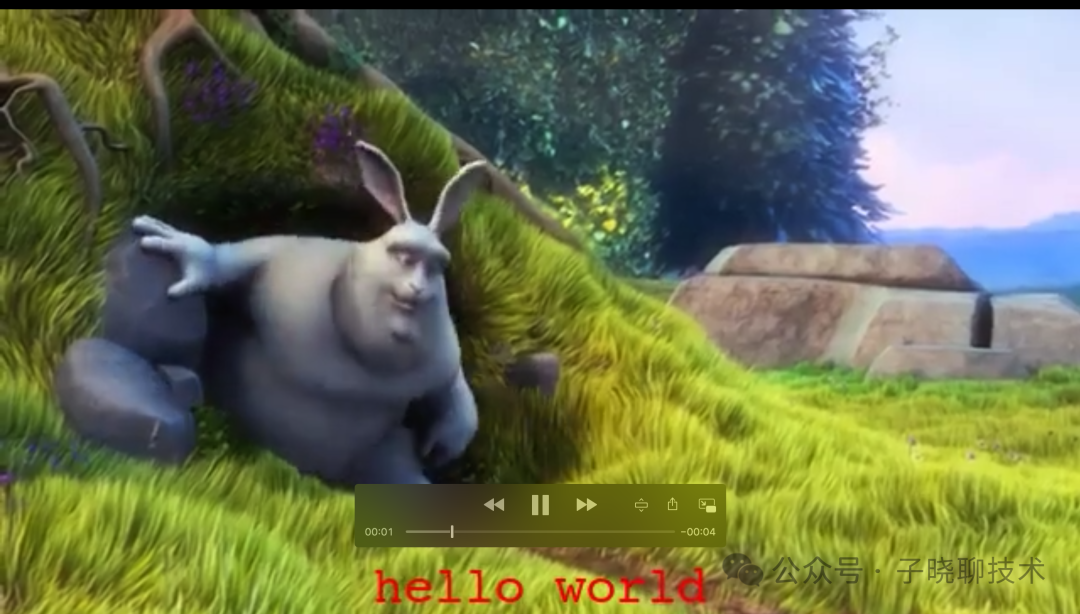最近对视频创作感兴趣, 详情见之前写的几篇文章。
【AI+应用】模仿爆款视频二次创作短视频操作步骤
【人工智能】AI数字人视频演示
【人工智能】AI视频二次创作演示
作为程序员出身的我,看到一些功能, 我都有猎奇的习惯, 想着自己用什么技术来实现它呢。
处理音视频,大家很容易想到大名鼎鼎的ffmpeg。FFmpeg是一套可以用来记录、转换数字音频、视频,并能将其转化为流的开源计算机程序。它提供了录制、转换以及流化音视频的完整解决方案。 2013年那时候做流媒体直播的时候我就有所了解。既然我这里选择python,这里介绍2个python库,一个是ffmpeg-python , 一个是moviepy。
这里以mac为例, windows或linux思路类似。
一、ffmpeg-python, python代码来操作ffmpeg
1、ffmpeg下载地址: https://ffmpeg.org//download.html , 选择自己合适的版本
2、下载解压后,vi /etc/profile修改环境变量,
export PATH=$PATH:/Users/xxxx/software/ffmpeg/bin
3、pip install ffmpeg-python
二、moviePy,是一个用于视频编辑Python库:切割、拼接、标题插入,视频合成,视频处理和自定义效果的创造。
1、必须先安装imagemagick , brew install imagemagick
这个安装比较扯,安装各种缺包,我秉持缺少安装什么 brew install xx的原则,所幸全部安装成功了, 主要是因为我之前已经换成国内源了。
如果你安装不成功,可以尝试换一下中科院的源。https://mirrors.ustc.edu.cn/brew.git
2、pip3 install moviepy
三、这里给一个 moviepy视频添加字幕的简单demo, 网上摘录的代码。
from moviepy.editor import CompositeVideoClip, VideoFileClipfrom moviepy.video.VideoClip import TextClipimport osimport argparse# Define the base directorybase_dir = os.path.dirname(os.path.abspath(__file__))# Define CLI argumentsparser = argparse.ArgumentParser()parser.add_argument('-f',type=str,help='The file path of target video. '+ 'ex. /Users/lwj/video/example.mp4.\nDefault value is "demo.mp4"',default=base_dir + '/demo.mp4')parser.add_argument('-t',type=str,help='The text you want to add to video top. '+ 'ex. "Hellow Video"',default='This is demo example')parser.add_argument('-s',type=int,help='The font size of video watermark. '+ 'ex. 30',default='30')parser.add_argument('-n',type=str,help='The new file name.\n'+ 'Default value is {current file name}_title.mp4',)# Define Variableargs = parser.parse_args()video_path = args.fvideo_watermark = args.tfont_size = args.s# Check whether or not the input video path is valid. If not, ask user to input again.while True:try:video = VideoFileClip(video_path)print('video resultion: ', video.size)breakexcept Exception:print('Directory or file is not valid,'+ ' please enter a valid file directory ...')video_path = str(input('Enter the video path again (absolute path without space): '))origin_file = (lambda x: x.split('/')[-1])(video_path)if args.n:new_file = args.nelse:new_file = f'{origin_file.split(".")[0]}_title.{origin_file.split(".")[1]}'def add_text(content, font_size):'''add text on the top of video stream'''# txt_clip = (TextClip(content, fontsize=font_size, color='white')# .set_position('top')# .set_duration(video.duration))txt_clip = (TextClip(content, fontsize=font_size, color='red').set_position('bottom').set_duration(1))result = CompositeVideoClip([video, txt_clip])result.write_videofile(new_file)def main():add_text(video_watermark, font_size)if __name__ == '__main__':main()
命令执行: python3 video-textadder.py -f demo.mp4 -t "hello world"

改一下字幕位置、颜色。

未完待续,后续找个时间继续水。 自己不止更新技术类文章, 如果想了解更多,可以关注同名公众号《子晓聊技术》



)






)
)
之线性回归的基本原理)

源码解析)

)
)

